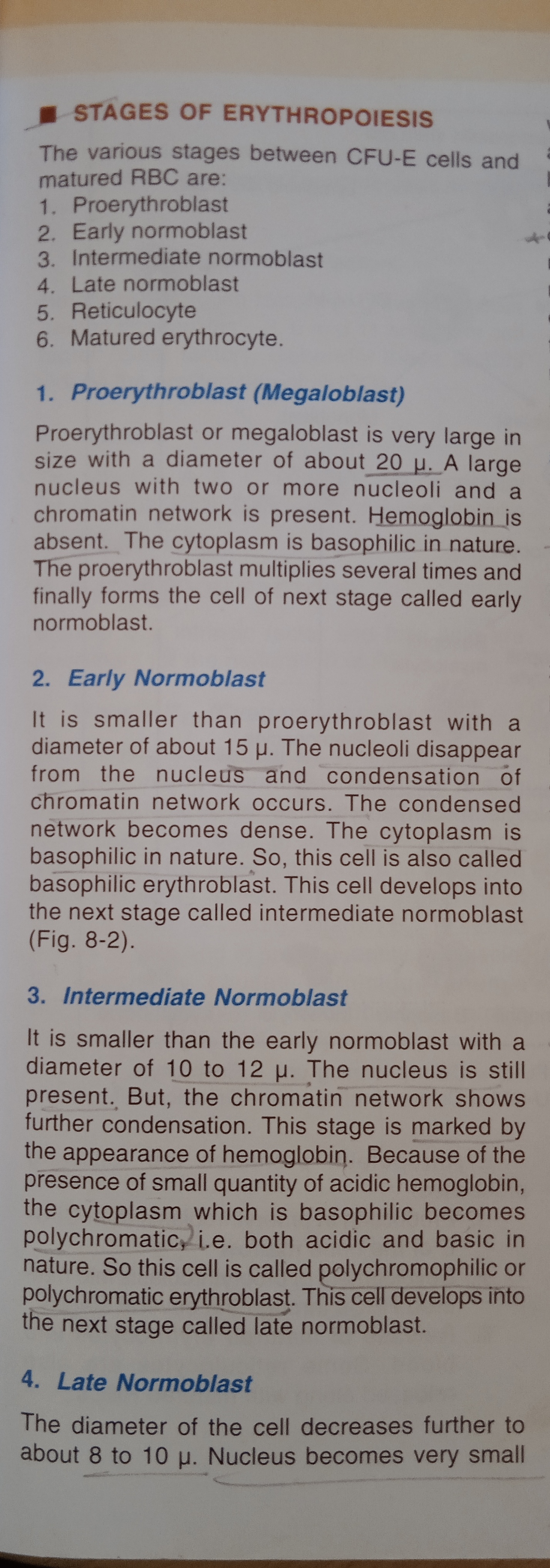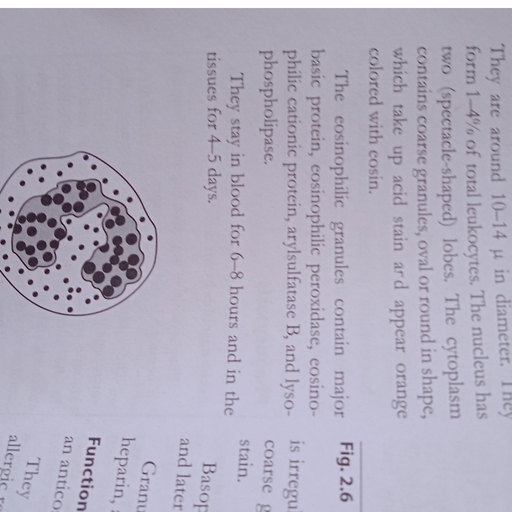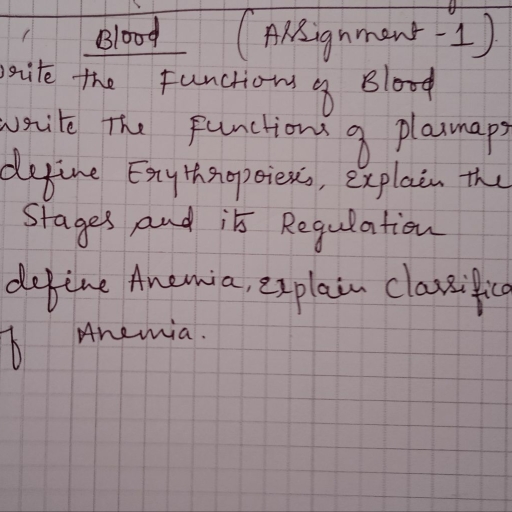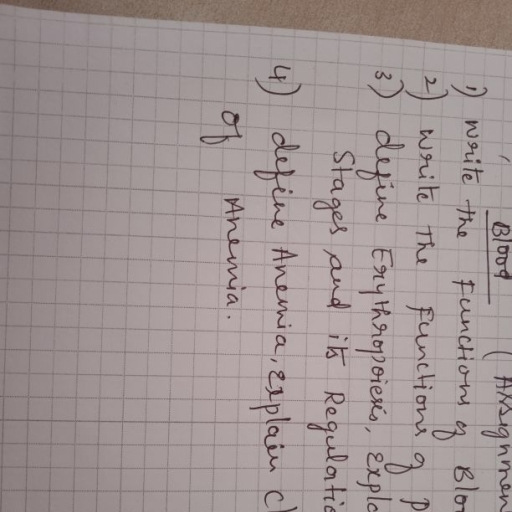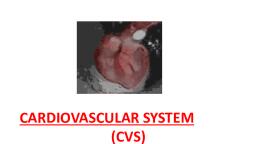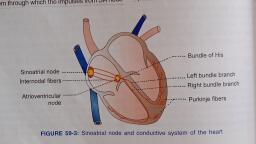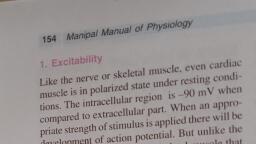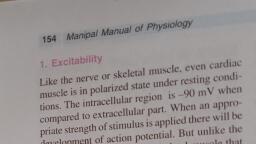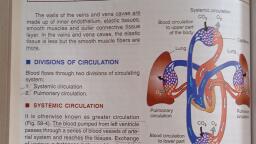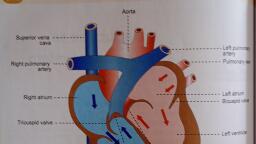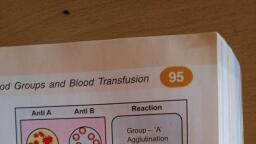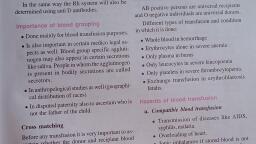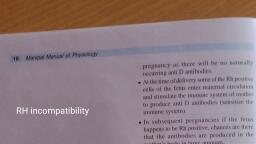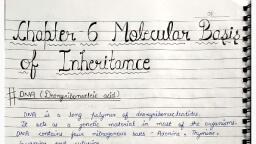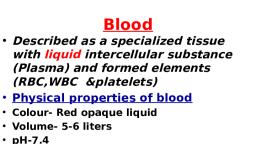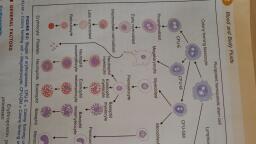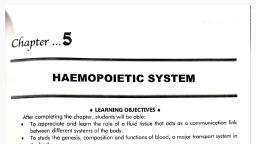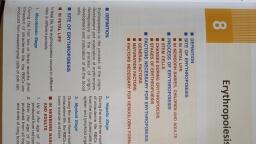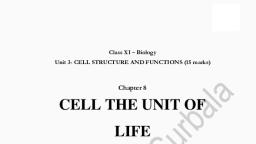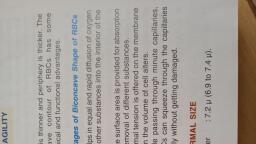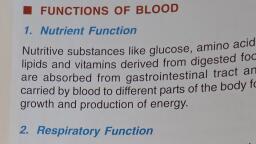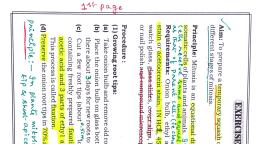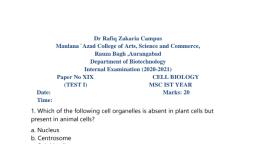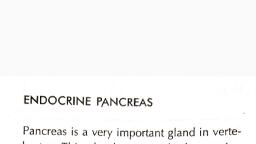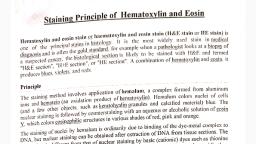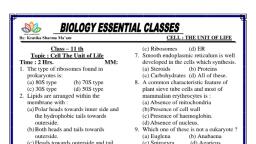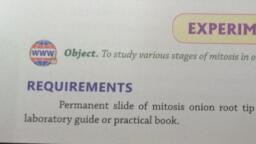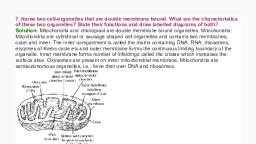Page 1 :
_™@ STAGES OF ERYTHROPOIESIS, , The various stages between CFU-E cells and, matured RBC are:, , Proerythroblast, , Early normoblast ae, Intermediate normoblast, Late normoblast, Reticulocyte, , Matured erythrocyte., , AAA RNs, , 1. Proerythroblast (Megaloblast), , Proerythroblast or megaloblast is very large in, size with a diameter of about 20 up. A large, nucleus with two or more nucleoli and a, chromatin network is present. Hemoglobin is, absent. The cytoplasm is basophilic in nature., The proerythroblast multiplies several times and, finally forms the cell of next stage called early, normoblast., , 2. Early Normoblast, , It is smaller than proerythroblast with a, diameter of about 15 uy. The nucleoli disappear, from the nucleuS and condensation of, chromatin network occurs. The condensed, network becomes dense. The cytoplasm is, basophilic in nature. So, this cell is also called, basophilic erythroblast. This cell develops into, the next stage called intermediate normoblast, (Fig. 8-2)., , 3. Intermediate Normoblast, , It is smaller than the early normoblast with a, diameter of 10 to 12 u. The nucleus is still, present. But, the chromatin network shows, further condensation. This stage is marked by, the appearance of hemoglobin. Because of the, presence of small quantity of acidic hemoglobin,, the cytoplasm which is basophilic becomes, polychromatic,’i.e. both acidic and basic in, nature. So this cell is called polychromophilic or, polychromatic erythroblast. This cell develops into, the next stage called late normoblast., , 4. Late Normoblast, , The diameter of the cell decreases further to, about 8 to 10 u. Nucleus becomes very small
